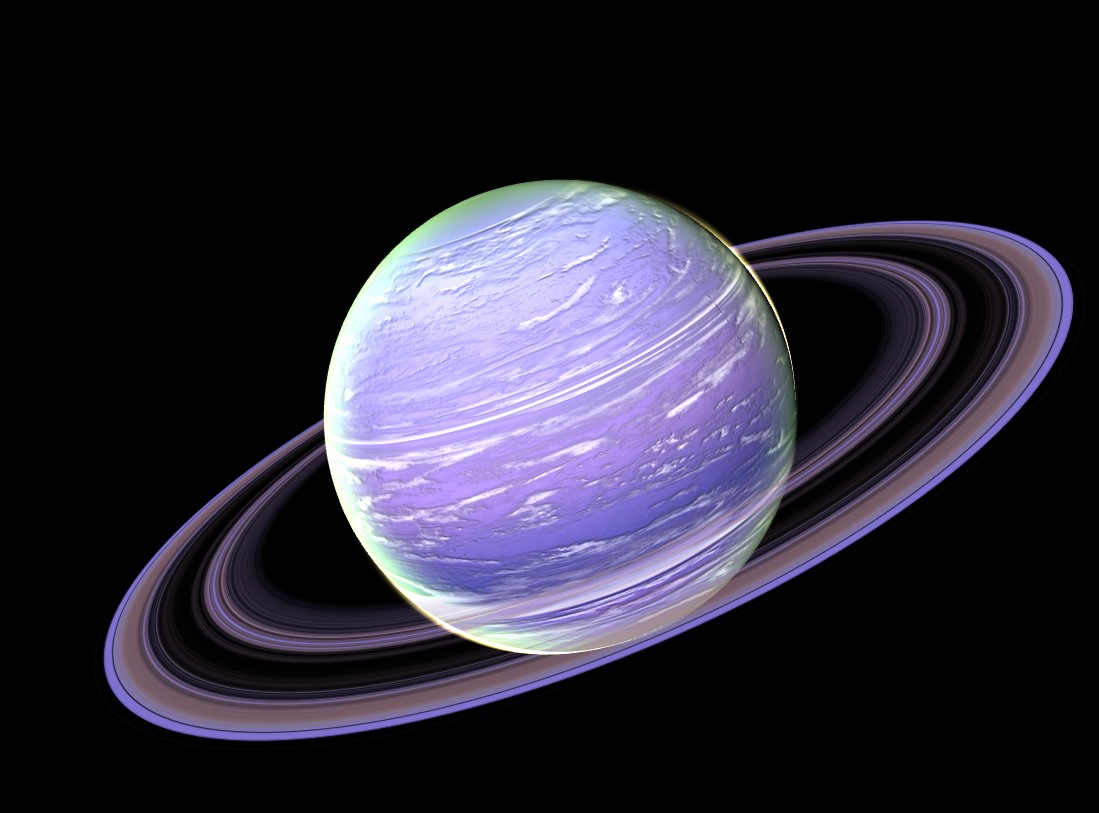Zetauri IV
The 'Eye of Zetauri'. From the research I found, the phrase comes from a set of records out of the old Jedi Library. A Jedi Knight researcher was drawn here and claimed to feel like Zetauri IV "was as if the Force was looking back at him through the world".
I'll admit... if I stare at the gas giant long enough, I get an odd feeling. Which means it's time I find better things to go do.
Holopedia Galactica entry:
Zetauri IV is the fourth planet in the Zetauri System and the sole gas giant. A 'hot' gas giant, it is the largest planet in the system being 80 times the mass of all three of the rocky inner planets combined.
The world's core is comprised of primarily iron, nickel, quadroalum and other similar minerals. They are compounded by the intense pressure and heat of the giant. This leaves the bulk of the immense size of the world is rolling layers and bands of caustic burning atmosphere.
Researchers have long suspected that Zetauri IV is a "failed star" or a "proto star" that lacked enough mass to fully make the transformation.
Geography
The 'geography' of Zetauri IV is comprised of rolling bands of storms that move in several violent weather patterns around the planet. These storms generate energy discharges between the cloud layers that can easily be seen from orbit. Another feature is that the atmosphere literally seems to 'boil', where gas discharge will rise into the upper atmosphere as if they are a bubble rising to the surface of a boiling liquid.
This effect, according to planetary researchers, is a result of the gas giant's extremely high gravity and the unique mix of gasses that comprise the atmosphere. Some of which are liquified metals.
A Never Ending Storm
However, the most spectacular feature of the planet is its elaborate ring system. Unlike many worlds where the ring system is a collection of ice particles that slowly degrade over eons, Zetauri IV's rings are different.
Here, the rings are a mix of ice and frozen rocky debris that orbit the world. Within this thick debris field, a perpetual ion storm travels the circumference of the rings, carried along by the conductive minerals in the debris itself.
They're fascinating! Some orbit so close together, you could probably land on them! Not that the ion storm makes that a good idea...
Ships traveling the region are advised to take extreme caution if visiting the moons or other areas in the vicinity of Zetauri IV.
That's putting it light. Those rings play all the hells with navigation when doing a close fly-by.
Not that I would ever do that in government issued starfighter craft...
again...
this time...
A Star System in Miniature
Zetauri IV has five moons with dozens of small asteroids. Most of the asteroids are concentrated in and around the ring system, chasing the gravimetric effects of the ion storm as it traverses the rings.
Viter
Designation Asteroid Moon. Innermost of moon system.
Main Biome Mountain Terrain
Diameter 22 kilometers
Gravity 0.005 of Galactic Standard
Atmosphere No Atmosphere
The innermost moon, Viter is a large captured asteroid that settled into the innermost orbit of all Zetauri IV's moons.
Chas
Designation Moon with rough Iron-based surface. Second closest in orbit to planet.
Main Biome Desert Terrain with steep canyons
Diameter 3643 kilometers
Gravity .2 of Galactic Standard
Atmosphere Thick with heavy nitrogen and silica
The surface of the moon, Chas, is dominated by iron deposits and iron ore nuggets. In the ancient past, the moon had been in the process of being terraformed by an unknown civilization. The abandoned equipment on the moon does not match what has been found elsewhere in the system. Severe dust storms scour the moon's surface.
Rokuff
Designation Asteroid Moon. Third closest in orbit to planet
Main Biome Mountain Terrain
Diameter 1243 kilometers
Gravity 0.1 of Galactic Standard
Atmosphere Thin and suflur based
A large, spherical asteroid with a radial tilt that produces violent sulfur explosion storms.
Jibunt
Designation Rock and ice covered moon. Fourth closest in orbit to planet
Main Biome Mountain, Ice and Glacial Terrain
Diameter 2241 kilometers
Gravity 0.15 of Galactic Standard
Atmosphere Thin oxygen-methane based
Covered in endless sheets of snow and ice, the surface is tinged orange. The moon has its own small, stable ring system of dust and ice.
Guand
Designation Shattered planetoid or moon. Outermost moon in orbit to planet
Main Biome Varies as per section
Diameter Chunks of rock, ice and other portion of a formerly spherical moon. The largest is 3865 km across
Gravity Varies. The largest piece exhibits 0.9 of Galactic Standard
Atmosphere Varies. An oxygen-nitrogen atmosphere envelopes the expanse of shattered moon.
Scans show this moon was shattered in the past due to a tremendous energy impact. The shattered remains continue to rotate around a cracked magnetic based core, generating gravity on the shattered surfaces.
Alternative Name(s)
Eye of Zetauri
Type
Planet
Location under
Owning Organization




Comments